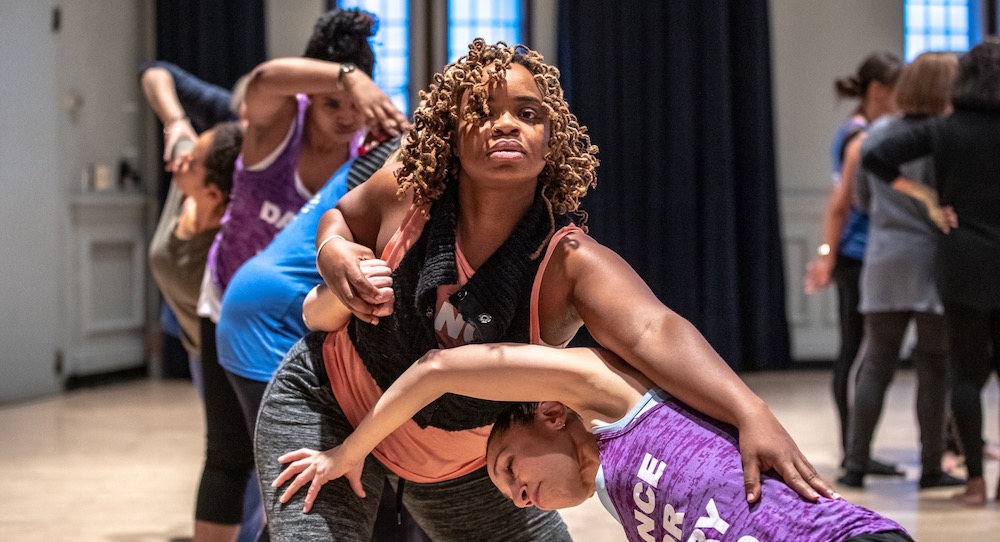“The show must go on” — it’s perhaps the most quintessential performing arts adage. Yet, human beings aren’t machines. Yes, we as dance artists commit and have people depending on us, and some level of discomfort is par for the course (arguably, it’s a key part of growth), but are there times when for us, for our own wellbeing, the show shouldn’t go on? Are there times when it’s actually best to step back or step away from dancing because we need a rest and reset?
These questions are particularly key in a time when a pandemic-induced reshuffling of the arts — and, for many, the mental health challenges that it’s brought — has led many dance artists to take time away from the art form, or at least consider doing so. Those same forces have also opened up conversations on mental health, resiliency and self-care in the world more broadly, creating an environment more conducive to these conversations in the dance field. To dive deeper into these matters, Dance Informa spoke with dance psychologist Lucie Clements and dance/movement psychotherapist (BC-DMT, LCAT) Cashel Campbell.
Challenges and performance readiness
Some might reasonably question the idea of stepping away or stepping back because of discomfort; particularly in endeavors like dance, some level of discomfort is part of growth. Clements agrees with that idea — within the realm of technical skill and mastery. Learning and growth occur when one steps beyond the bounds of their current knowledge and/or abilities.
Clements offers an important guideline to that idea, however. “The key thing is that when we enter that place of ‘not knowing’, that we are correctly guided and supported by someone with the skills and experience until we have mastered how to do it independently,” she says. “The guidance needs to be about moving step by step rather than trying to get from the bottom to the top of the staircase in one move.” There seems to be a happy medium at which stepping outside our comfort zones is challenging and comes quickly enough — and at which one is also supported by a knowledgeable teacher.
One also needs to find a “middle road” when it comes to optimal performance. Clements explains that balanced place through the concept of the “Zone of Optimal Performance,” which is shaped like an upside-down “U.” On one side of that zone is hypoarousal, when one cares little enough about their performance that they underperform. On the other is hyperarousal, when one cares so much about performing at their best that they experience anxiety or fear.
“The most important thing is to learn where the limits of your zone are and never compare yourself to your peers. We are all built differently and can tolerate different amounts of emotional arousal or distress,” Clements affirms. How can one learn about themselves in that way, and find the inner fortitude to refrain from comparing themselves to others?
For Campbell, so much of our wellness and self-knowing is about authenticity. For her, staying connected with her Caribbean roots reminds her to not take on burdens that aren’t hers, for example. She also emphasizes the importance of, as dancers, being clear about what is us and what is the artist within who we are and what we do. In order to do that, we need to maintain practices that keep us fully embodied, whatever that might be for us (whether yoga, walking in nature, improvising or simply resting), as well as take time and space to look inside to our own truth, she asserts.
Burnout, warning signs and being proactive
Burnout can be a true sign that we’ve gotten disconnected from that inner wisdom and perhaps overworked ourselves. Clements notes that physical and emotional exhaustion, as well as diminished performance, can be key signs of burnout, which she defines as “prolonged exposure to stress.” Even more concerning, burnout is also associated “with devaluing dance, or feeling a reduced interest, which can quickly lead to dropout,” she explains.
At that point, taking a pause from dancing, as she likes to call it, can actually help a dancer to “step forward,” Clements argues. “If we don’t pause, we don’t have the opportunity for our well-being to recover, or to reconnect with our values as a dancer and why we loved dance in the first place. Pausing is not stopping, but an investment in your present and future,” she notes. Campbell shares how some of her best classes have been after taking time away to rest, for example.
Are there ways to notice that we’re going in that direction before it gets to that point? Yes, Campbell believes — within particular physical signs, through which our body is trying to tell us that it’s all too much. Those signs include negative changes in sleep and/or eating, strange aches and pains, sudden gastrointestinal issues and — as Clements notes — diminished desire to dance or do other things that we normally love to do. Further, “when you recognize that you feel numb, that’s a sign that it’s time to step away,” Campbell affirms.
One might think of those signs as yellow lights, signaling us to stop before a red light comes — because continuing to go at that point could be truly harmful. Clements also notes the importance of being proactive in that way, so that decisions to pause aren’t at the point when we have to weigh competing obligations.
Difficult decisions
The point at which one is sensing that they need a pause could be the middle of a rehearsal process or a company season. In fact, the pressures and workload of those periods could be key contributors to burnout. Clements acknowledges that dancers can have important commitments — to castmates, choreographers and even young dancers looking up to you — yet, commitment to one’s own well-being is also an important commitment.
She suggests clearly defining what the current stressors are doing to one’s well-being, and at what point that impact is too much. “It’s like having a contract with yourself that guides you to know when to place your well-being above your commitments,” she explains.
As for the feeling of potentially “letting down” young people who admire you, Clements argues that it’s actually a very good thing for young artists to see dancers they look up to place their mental and physical health first. “I don’t think there could be any better inspiration for our young dancers than hearing your idol say, ‘I am pausing to put my mental health first,’” she states. Clements believes that “the most important lesson dancers can teach the next generation of performers is to work hard, be committed and stay focused whilst also respecting your health.”
In these situations we can — perhaps even more so — also dread disappointing or burdening choreographers, artistic directors and others in positions of power. Campbell brings it back to authenticity, to know what emotions are yours and what are others’. She also notes that we can sometimes perceive such pressures and expectations as bigger than they really are. It’s natural to feel badly when we’re stepping back from our commitments — yet, “we don’t have to apologize for taking care of ourselves,” Campbell also affirms.
Structural and cultural supports
Apart from what individuals can do to make more attuned, healthy decisions about when it might be time to take a pause from dance, Clements points to two larger structural forces at work. First, dancers must be provided with the tools to get to that more attuned, introspective place, such as wellness workshops and available career and psychological counseling.
Dancers also have to work in environments in which they feel empowered to be themselves and make choices that are best for themselves (as artists and as people). “It’s all very well giving these skills to our dancers, but if managers or directors create a culture of fear around time off or stepping back, then real change can’t happen,” Clements argues.
Second, by consciously attending to their own well-being, those in leadership positions can set a positive example for dancers working with and under them. Campbell notes how now, as we reevaluate and rebuild norms and structures following COVID, is a great time to set in place these sorts of culture shifts within the dance field.
“Reclamation is powerful,” she asserts. Perhaps now is a time when we, as the dance field, can reclaim the ability to take time away from dance when we need it. Whether we do or not, whatever we decide is best, it’s in our collective hands.
By Kathryn Boland of Dance Informa.















